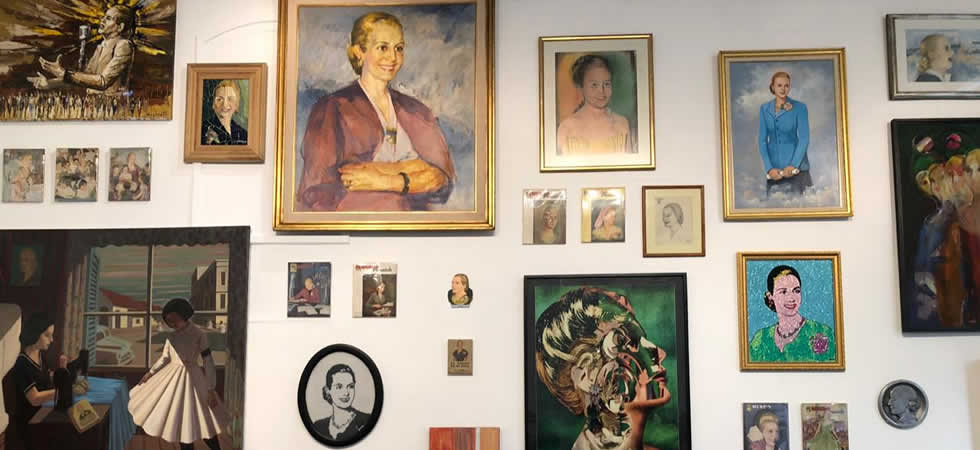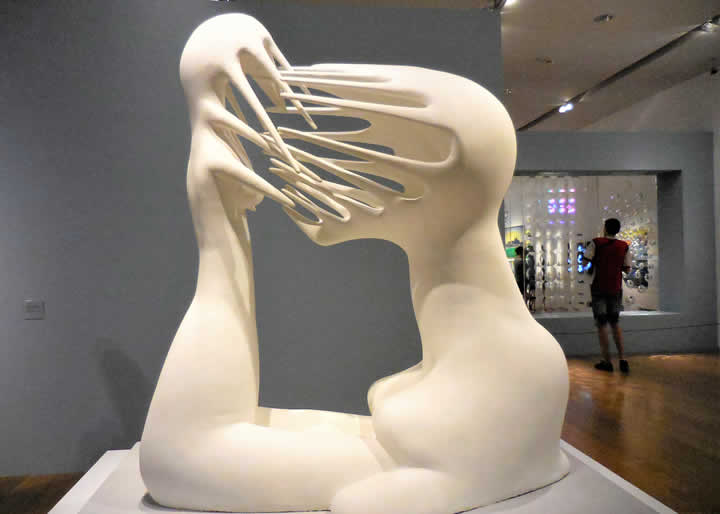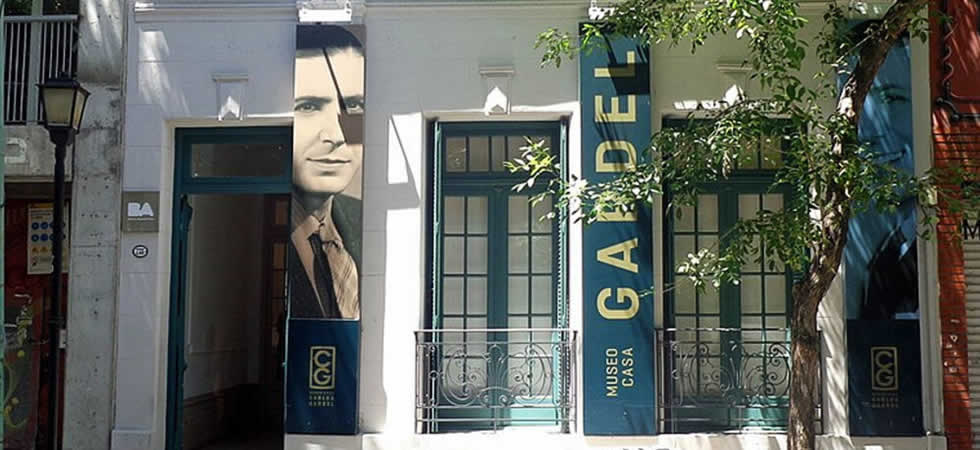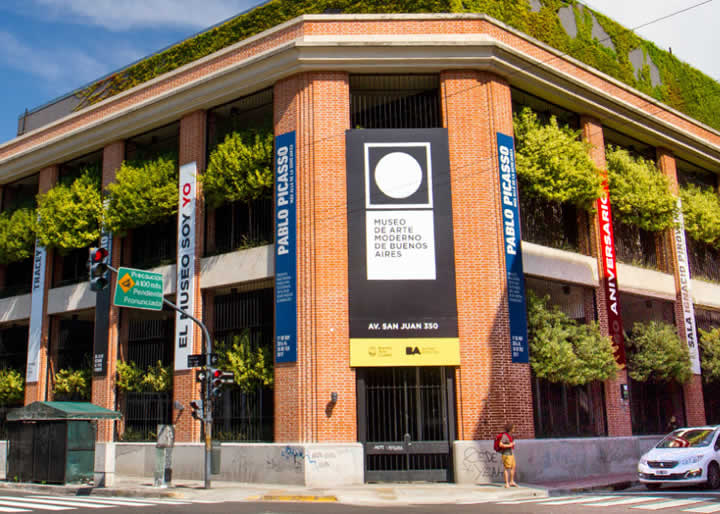Museums in Buenos Aires
Buenos Aires is home to an impressive array of museums covering everything from art and history to science and technology.
Visiting museums is a beautiful way to take a trip back in history to learn about the customs, traditions, life, and environment of past civilizations. In the past 20 years, Buenos Aires has declared many sites as historical attractions, turned many local spots into exhibits for museums, and opened up a new tourism branch by promoting local grave sites and private homes for visiting. Many museums are dedicated to the history of Buenos Aires and Argentina, paleontology, archaeology, and art. Here, you can also see many galleries and exhibition halls containing unique and interesting works by local artists The ´Museo Forense de la Morgue Judicial´ even has cadavers on display!
Most museums in Buenos Aires are closed on Mondays. Some museums are free like the Museo Nacional de Bellas Artes (Museum of Fine Arts of Argentina), the Immigration Museum, and the Cabildo. The Museum of Latin American Art (MALBA) has a half-price entry on Wednesdays. At the same time, the Museum of Decorative Arts and the Museo de Arte Moderno are free on Tuesdays. Check before you plan your visit tickets prices and opening hours of the museums in Buenos Aires carefully before you head there.
Museo de Bellas Artes (MNBA)
The MNBA is a comprehensive public art museum, including a collection of work by local Argentinean artists. This museum has a collection of over 12,000 works of art, including paintings, sculptures, and decorative arts.
It has a mélange of art representing the tastes of its owners and benefactors such as Jackson Pollock, Rembrandt, and El Greco, to name but a few. The museum's strength lies in its collection of late 19th and early 20th-century art with pieces from Monet, Pissarro, Renoir, Van Gogh, and Picasso. Also, do not forget to check out the extensive art collection by some local Argentinean matters. This museum is a must-see for Early Modern European painters, French Impressionists, and Post-Impressionist fans. Housed in a former pumping station, the museum does not have the grandeur of other museums. You will, however, find some of Argentina´s most artistic treasures. The entry is free, with MP3 tours in English and Spanish. Free English tours: Tue, Wed & Fri 13:00.
Address: Avenida del Libertador 1473
Telephone: +54 (11) 4803 0802
Website: http://www.mnba.org.ar
Website: www.bellasartes.gob.ar.
How to get there: Take bus 17, 59, or 130, or the subway (line D) to the Callao station
Museo Evita Peron
The Museo Evita Peron is a museum with many fascinating items that pay homage to the late Eva Duarte Peron. It opened in 2002, on the 50th anniversary of her death, to pay tribute to her life and teach others about her impact on the country of Argentina. Each room houses an assortment of film clips, pictures, and artifacts that trace her life, from her childhood up through her youth as an actress and her role as a social activist and the First Lady of Argentina. Exhibits show her relentless fight for female civil rights causes and orphanages. For those who do not speak Spanish, cards with English translations of the film clips are available. The final room showcases the events that lead to her demise and includes a replica of her death mask. Those curious can also visit where she is buried in the Recoleta cemetery, not far from the museum. Each day, one can find a procession of people who visit the Duarte family vault where Evita rests. Unlike most museums in Argentina, the signs include an English description. A visit to this museum is a must during every visit to the capital.
Address: Lafinur 2988, 1425
Telephone: +54 (11) 4807 0306
Website: http://www.museoevita.org

Museo Eva Peron Buenos Aires
Museo de Historia Nacional
The Museo Histórico Nacional was created in 1880, after half a century of civil wars, to unify the young Argentine nation and develop a sense of national identity amid the profound changes occurring. Located in San Telmo, the museum displays objects relating to the May Revolution of 1810 and the Argentine War of Independence, including paintings, sculptures, flags, standards, weapons, uniforms, and everyday objects. Highlights include sabers that belonged to independence heroes José de San Martín and Manuel Belgrano and a flag from the battle of Ayohúma. In addition, also items from Jesuit missions and relics saved from the War of Independence against Spain can be found in this historical museum.
It is one of the oldest and most important museums in Buenos Aires, situated in an antique family home of the Italian Lezama family. It has 33 rooms and three galleries chronologically displaying iconography, military uniforms, weapons, trophies, and many more artifacts depicting Argentine history. These artifacts include personal belongings from famous explorers and conquistadors such as Juan de Garay. The museum's focal point is the collection of art by Candido Lopez: a series of fascinating scenes depicting the war against Paraguay in the 1870s.
Address: Calle Defensa 1600
Telephone: +54 (11) 4307 4457
Wednesday to Sunday, 11am to 6pm.

Museo Historico Nacional Argentina
Museo Latin American Art Buenos Aires (MALBA)
The MALBA (Museo de Arte Latinoamericano de Buenos Aires) is a museum of Latin American art located in the Palermo neighborhood of Buenos Aires, Argentina. It was founded in 2001 by the businessman Eduardo Costantini with the aim of promoting and preserving Latin American art and culture.
The museum is housed in a modern building designed by the Argentine architect, Eduardo Souto de Moura, and is home to an impressive collection of over 5000 works of art, including paintings, sculptures, photographs, and installations. The collection focuses on the art of the 20th and 21st centuries and includes works by some of the most important Latin American artists of the period, such as Frida Kahlo, Diego Rivera, and Fernando Botero.
One of the most impressive features of the MALBA is its collection of Argentine art, which includes works by some of the country's most famous artists, such as Antonio Berni, Xul Solar, and Emilio Pettoruti. The museum also has an extensive collection of works by Brazilian artists, such as Candido Portinari, Tarsila do Amaral, and Lygia Clark.
In addition to its permanent collection, the MALBA hosts a number of temporary exhibitions throughout the year, showcasing the work of both established and emerging artists. The museum also offers a variety of educational programs, including guided tours, workshops, and lectures, aimed at promoting the study and appreciation of Latin American art and culture.
The MALBA is not just a museum; it is also a cultural center that offers visitors a range of facilities, including a bookstore, a café, and a cinema. The cinema program focuses on the best of Latin American cinema and offers regular screenings of classic and contemporary films from the region. MALBA is a must-visit destination for art lovers and anyone interested in Latin American culture. Its extensive collection, modern facilities, and dynamic cultural programming make it one of the most important cultural institutions in Buenos Aires, and a highlight of any visit to the city.
Address: Avenida Figueroa Alcorta 3415
Telephone: +54 (11) 4806 6500
Website: http://www.malba.org.ar
Website: www.malba.org.ar
How to get there: Take bus 67, 130, or 160, or the subway (line D) to the Bulnes station.

Malba Museum Buenos Aires
Museo Carlos Gardel
The Museo Casa Carlos Gardel in Buenos Aires is a museum dedicated to the life and work of the famous tango singer and composer Carlos Gardel. Located in the Abasto neighborhood, the museum is housed in a historic building that was once home to Gardel and his mother, Bertha Gardes.
The museum features a collection of artifacts related to Gardel's life and career, including photographs, records, costumes, and personal belongings. The collection is displayed in several rooms of the museum, including the living room, bedroom, and kitchen of Gardel's former home. The museum also has a library and a research center dedicated to the study of Gardel and tango music.
Visitors to the museum can take a guided tour of the building and the exhibition, which includes information about Gardel's life and his impact on tango music and culture. The tour is available in Spanish, English, and French, and lasts approximately one hour.
In addition to the exhibition and tour, the museum also hosts cultural events and activities related to tango music and dance. These include concerts, lectures, and dance workshops, as well as a tango festival held annually in honor of Gardel's birthday.
Address: Jean Jaures 735(Abasto)
Telephone: +54 (11) 4964 2015
buenosaires.gob.ar/museocasacarlosgardel
Open Wednsday to Sunday
To visit the Museo Casa Carlos Gardel in Buenos Aires, you can take the subway to the Carlos Gardel station (Line B).

Museo Carlos Gardel
Ciencias Naturales Bernardino Rivdavia (MACN)
The Ciencias Naturales Museum (Museo de Ciencias Naturales) in Buenos Aires is one of the most important natural history museums in Latin America. Located in the Palermo neighborhood, it was founded in 1823, making it one of the oldest museums in Argentina. The museum is also commonly referred to as the Bernardino Rivadavia Natural Sciences Museum, in honor of the first president of Argentina, who was a strong supporter of science and culture.
The collection includes more than 2 million specimens of plants, animals, fossils, and minerals from Argentina and other parts of the world. The collection is divided into several sections, including paleontology, botany, zoology, and mineralogy. Some of the most notable specimens in the collection include fossils of prehistoric creatures, such as dinosaurs and mammoths, and a wide variety of animals and plants from different regions of Argentina.
The museum also has several permanent exhibitions, including a display on the history of life on Earth, a collection of skeletons of large mammals, and an exhibit on the geology and minerals of Argentina. The museum's exhibitions are known for their interactive and educational elements, making them popular with visitors of all ages.
In addition to its exhibitions and collection, the museum also offers educational programs including guided tours, workshops, and lectures on a wide range of topics related to natural history and science.
Address: Avenida Angel Gallardo 470
Telephone: +54 (11) 4982 5243
http://www.macn.gob.ar/.
How to get there: you can take the subway to the Plaza Italia station (Line D) or the Palermo station (Line B). Closed Mondays and Tuesdays.
Museo Xul Solar
The museum Xul Solar is dedicated to the preservation and exhibition of the work of Argentinean painter Alejandro Xul Solar. The museum was constructed in the house where he used to live with objects, sculptures and paintings that belonged to his personal collection. It’s said that Xul –born Oscar Agustín Alejandro Schulz Solar, Xul Solar's chosen name means "solar light" - lived with his wife in a small apartment above the museum for many years while they rented out the two apartments below to save up for the "museum to come."
A guided tour takes you through all stages of his artwork and explains other work that Xul Solar did. For example, he created a piano that matched colours with each note and with each key on the piano having its own texture allowing blind people the chance to learn how to play the piano. He also invented 10 new alphabets, and incorporated these into his artwork while making up words, stories and phrases using only the alphabets that he invented. This is a great museum to visit and will give you the opportunity to get a glimpse into the mind of the incredibly talented and intelligent artist Xul Solar. Through his paintings and sculptures, Solar crafted dystopian societies and alternate universes.
Address: Laprida 1212
Telephone: +54 (11) 4824 3302
Website: http://www.xulsolar.org.ar
Closed on Sundays and Mondays.
Museo Nacional de Arte Decorativo
Take a glimpse into what life, architecture, and design looked like for Argentina high society in Buenos Aires during the beginning of the 20th century. This museum is housed in the most stunning French-style mansion of Buenos Aires and has a collection of decorative arts, including furniture, ceramics, and textiles. Located in Recoleta, this mansion was once the palace of Josefina Alvear and Matías Errázuriz Ortúzar, an aristocratic Argentine family.
The house was designed by French architect René Sergent, who also built the Trianon Palace Hotel in Versaille and you notice: the Dining Room (for more than 24 guests) and Ball Room are very similar of the Versailles Palace.
Address: Av. del Libertador 1902
Website: www.mnad.gob.ar
Free on Tuesdays
How to get there: Take bus 10, 15, 37, or 59, or the subway (line D) to the Facultad de Derecho station.
Museo de Arte Contemporáneo de Buenos Aires (MACBA)
This museum focuses on, with a collection of over 7,000 works by Argentine and international artists. The Museum of Contemporary Art in Buenos Aires (MACBA) is one of the most important cultural institutions in Argentina. It is located in the neighborhood of San Telmo in the historic center of Buenos Aires. The museum's mission is to promote contemporary art and to foster a dialogue between artists and the public.
MACBA was founded in 1956 by the art critic Rafael Squirru. It started as a small gallery in his home, but it quickly grew and moved to several different locations before settling in its current location in San Telmo in 2012. The building that houses the museum was originally built in 1915 and was used as a tobacco factory before being converted into a cultural center.
The museum's collection consists of more than 7,000 works of art from Argentina and around the world. It includes paintings, sculptures, installations, videos, and photographs, among other mediums. The collection is focused on contemporary art from the second half of the 20th century to the present day.
MACBA also hosts temporary exhibitions throughout the year, showcasing the work of both established and emerging artists. The museum's exhibitions are known for their innovative and thought-provoking themes.
In addition to its exhibitions, MACBA offers a variety of educational programs and events, including lectures, workshops, and guided tours. The museum also has a library that is open to the public and contains more than 10,000 books and publications on contemporary art.
Address: Av. San Juan 328
www.macba.com.ar.
How to get there: Take bus 4, 8, or 53, or the subway (line E) to the Independencia station.
Museo de Arte Moderno de Buenos Aires (MAMBA)
This experimental art museum in the San Telmo neighborhood has a collection of over 7,000 works of modern art, including paintings, sculptures, and photographs industrial and graphic design, with works from the 1950s to modern day. The museum is housed inside a former tobacco factory and only opened a few years ago—but it's already become a favorite for many art lovers. You will learn about modern art from an Argentine perspective, especially since the museum shows new and more established artists.
Address: Av. San Juan 350
San Telmo
Tel 4361-6919 / 4300-9139
https://museomoderno.org/
Open on Mondays, closed on Tuesdays
How to get there: Take bus 4, 8, or 53, or the subway (line E) to the Independencia station.

Museo de Arte Moderno de Buenos Aires